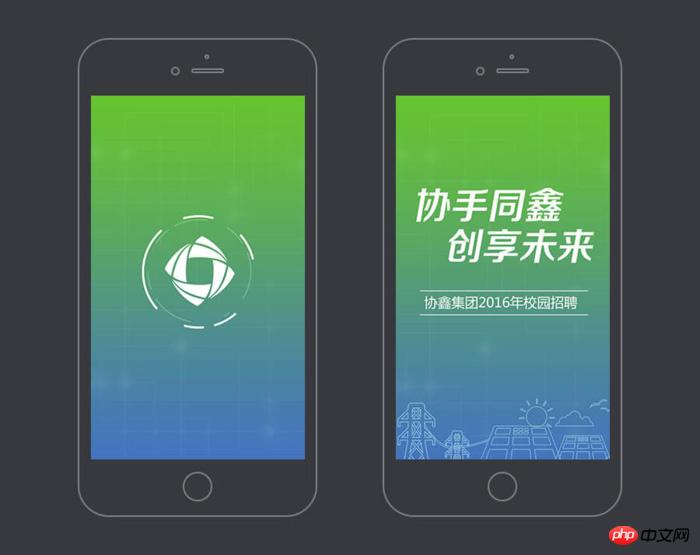Home >Web Front-end >JS Tutorial >How to determine client type using JS
How to determine client type using JS
- 亚连Original
- 2018-06-19 09:36:261619browse
This article mainly summarizes and introduces four methods of using JS to determine the client type, such as judging the userAgent of the browser, checking whether it is a mobile terminal (Mobile), ipad, iphone, WeChat, QQ, etc. Friends who need it can refer to it. The following
Preface
When we write responsive layout, we always have to consider whether it is On the mobile side, based on this, here are four methods to determine whether the client is ios or android. Share it for everyone’s reference and study. Let’s take a look at the detailed introduction with the editor.

The method is as follows:
1. The first one: by judging the userAgent of the browser, use Regular rules to determine whether it is an ios and Android client
User Agent is called user agent in Chinese. It is part of the Http protocol and is a component of the header domain. User Agent is also referred to as UA. It is a special string header, an identifier that provides the browser type and version, operating system and version, browser kernel, and other information you are using to the visiting website. Through this logo, the websites visited by users can display different layouts to provide users with a better experience or conduct information statistics; for example, accessing Google on a mobile phone is different from accessing on a computer. These are determined by Google based on the UA of the visitor. of. UA can disguise itself.
The standard format of the browser's UA string: browser identification (operating system identification; encryption level identification; browser language) rendering engine identification version information. But each browser is different.
The code is as follows:
<script type="text/javascript"> var u = navigator.userAgent; var isAndroid = u.indexOf('Android') > -1 || u.indexOf('Adr') > -1; //android终端 var isiOS = !!u.match(/\(i[^;]+;( U;)? CPU.+Mac OS X/); //ios终端 alert('是否是Android:'+isAndroid); alert('是否是iOS:'+isiOS); </script>
2. The second type: check whether it is mobile, ipad, iphone, WeChat, QQ, etc.
2.1 The code is as follows:
<script type="text/javascript">
//判断访问终端
var browser={
versions:function(){
var u = navigator.userAgent,
app = navigator.appVersion;
return {
trident: u.indexOf('Trident') > -1, //IE内核
presto: u.indexOf('Presto') > -1, //opera内核
webKit: u.indexOf('AppleWebKit') > -1, //苹果、谷歌内核
gecko: u.indexOf('Gecko') > -1 && u.indexOf('KHTML') == -1,//火狐内核
mobile: !!u.match(/AppleWebKit.*Mobile.*/), //是否为移动终端
ios: !!u.match(/\(i[^;]+;( U;)? CPU.+Mac OS X/), //ios终端
android: u.indexOf('Android') > -1 || u.indexOf('Adr') > -1, //android终端
iPhone: u.indexOf('iPhone') > -1 , //是否为iPhone或者QQHD浏览器
iPad: u.indexOf('iPad') > -1, //是否iPad
webApp: u.indexOf('Safari') == -1, //是否web应该程序,没有头部与底部
weixin: u.indexOf('MicroMessenger') > -1, //是否微信 (2015-01-22新增)
qq: u.match(/\sQQ/i) == " qq" //是否QQ
};
}(),
language:(navigator.browserLanguage || navigator.language).toLowerCase()
}
</script>2.2 How to use
/判断是否IE内核
if(browser.versions.trident){ alert("is IE"); }
//判断是否webKit内核
if(browser.versions.webKit){ alert("is webKit"); }
//判断是否移动端
if(browser.versions.mobile||browser.versions.android||browser.versions.ios){ alert("移动端"); }2.3 Detect browser language
currentLang = navigator.language; //判断除IE外其他浏览器使用语言
if(!currentLang){//判断IE浏览器使用语言
currentLang = navigator.browserLanguage;
}
alert(currentLang);3. Determine iPhone|iPad|iPod|iOS|Android client
The code is as follows:
if (/(iPhone|iPad|iPod|iOS)/i.test(navigator.userAgent)) { //判断iPhone|iPad|iPod|iOS
//alert(navigator.userAgent);
window.location.href ="iPhone.html";
} else if (/(Android)/i.test(navigator.userAgent)) { //判断Android
//alert(navigator.userAgent);
window.location.href ="Android.html";
} else { //pc
window.location.href ="pc.html";
};4. Determine pc or mobile terminal
The code is as follows:
<script>
//判断是否手机端访问
var userAgentInfo = navigator.userAgent.toLowerCase();
var Agents = ["android", "iphone",
"symbianos", "windows phone",
"ipad", "ipod"];
var ly=document.referrer; //返回导航到当前网页的超链接所在网页的URL
for (var v = 0; v < Agents.length; v++) {
if (userAgentInfo.indexOf(Agents[v]) >= 0&&(ly==""||ly==null)) {
this.location.href='http://m.***.com'; //wap端地址
}
}
</script>5. Commonly used jump codes
Look at the code
<script type="text/javascript">
// borwserRedirect
(function browserRedirect(){
var sUserAgent = navigator.userAgent.toLowerCase();
var bIsIpad = sUserAgent.match(/ipad/i) == 'ipad';
var bIsIphone = sUserAgent.match(/iphone os/i) == 'iphone os';
var bIsMidp = sUserAgent.match(/midp/i) == 'midp';
var bIsUc7 = sUserAgent.match(/rv:1.2.3.4/i) == 'rv:1.2.3.4';
var bIsUc = sUserAgent.match(/ucweb/i) == 'web';
var bIsCE = sUserAgent.match(/windows ce/i) == 'windows ce';
var bIsWM = sUserAgent.match(/windows mobile/i) == 'windows mobile';
var bIsAndroid = sUserAgent.match(/android/i) == 'android';
var pathname = location.pathname
if(bIsIpad || bIsIphone || bIsMidp || bIsUc7 || bIsUc || bIsCE || bIsWM || bIsAndroid ){
window.location.href = 'http://m.geekjc.com'+pathname; //wap端地址
}
})();
</script>The above is what I compiled for everyone. I hope it will be helpful to everyone in the future.
Related articles:
The problem that beforeRouteLeave cannot be triggered when the browser goes back when using Vue
How to solve the tap "point in the fastclick code "Through"
How to implement animated checkboxes in anime.js
Commonly used components and framework structures in vue (detailed tutorial )
The above is the detailed content of How to determine client type using JS. For more information, please follow other related articles on the PHP Chinese website!
Related articles
See more- An in-depth analysis of the Bootstrap list group component
- Detailed explanation of JavaScript function currying
- Complete example of JS password generation and strength detection (with demo source code download)
- Angularjs integrates WeChat UI (weui)
- How to quickly switch between Traditional Chinese and Simplified Chinese with JavaScript and the trick for websites to support switching between Simplified and Traditional Chinese_javascript skills

